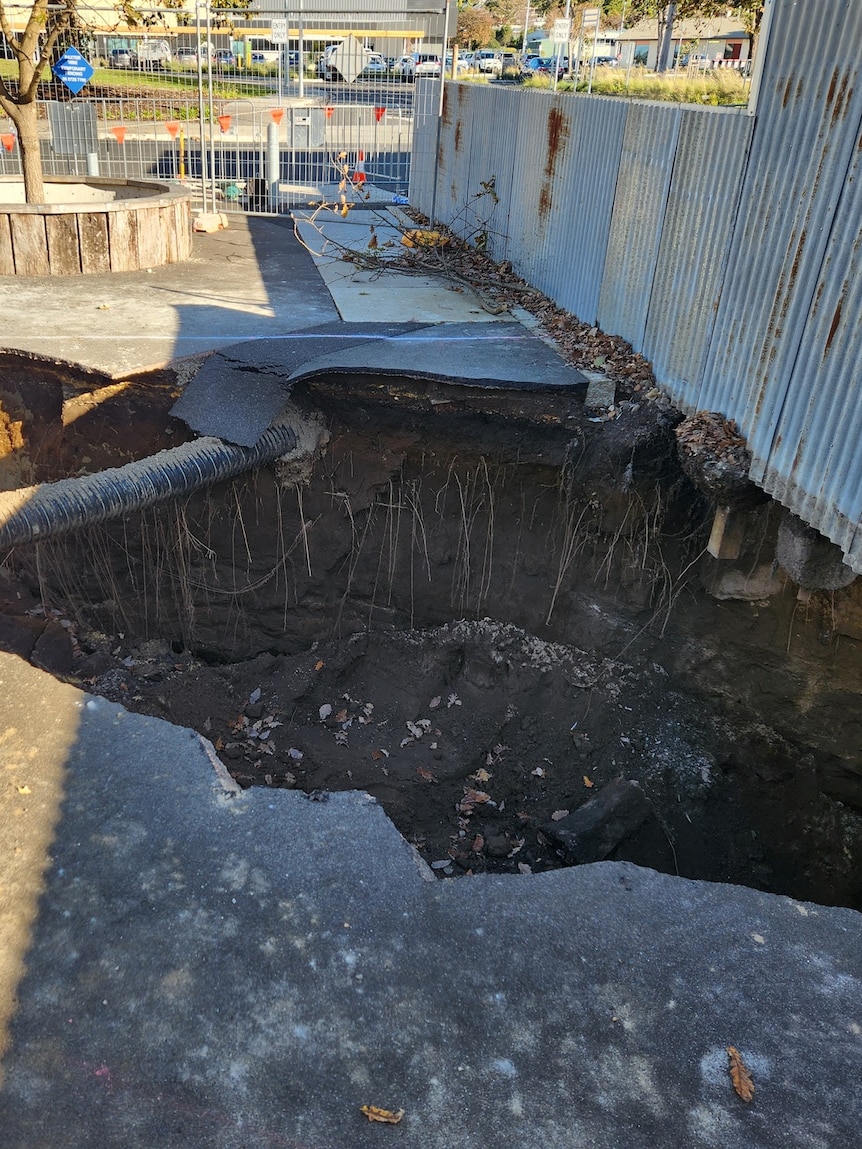A 4-metre-wide sinkhole that opened in Mount Gambier last month has led to the discovery of a hidden cave sealed off more than 5,000 years ago.
Key points:
- A geologist says the hole was previously filled by ash from a volcanic eruption 5,000 years ago
- Sinkholes in Mount Gambier normally appear along fault lines but are not necessarily connected
- The council is seeking independent advice on the best materials to fill the hole
The sinkhole appeared in the South Australian city’s CBD at the Railway Lands park on June 25 after a weekend of heavy rain.
With the City of Mount Gambier awaiting geotechnical engineering advice on how best to fill the large crater, local geologists like Ian Lewis have been called in to investigate.
Mr Lewis said the sinkhole had likely existed for thousands of years before it was filled with volcanic ash by the eruption of Mount Gambier.
“It would’ve been an old limestone sinkhole more than 5,000 years ago before the volcano blew up,” he said.
“When the volcano came, it filled it up again at the top with dirt, but it’s a very, very old sinkhole.”
The city’s volcano, which last erupted some 5,000 years ago, is thought to be one of Australia’s youngest.
Fault zone under the city
Mr Lewis said the sinkhole was located on a fault stretching from over the Victorian border, under Mount Gambier and past Millicent.
“It’s a big fault zone where the limestone gets lots of fractures in it, and the underground water dissolves caves along there,” Mr Lewis said.
“This sinkhole fits that pattern exactly because it’s exactly along that line and it’s an oval shape, which is the same direction as the regional geology.
“I wasn’t all that surprised to see its shape and its size and its direction.”
Mr Lewis said despite decades of exploration, there was little evidence the town’s caves were all interconnected.
“The caves in our region tend to be relatively short, even though a lot of them are in a line,” he said.
“They may not join up under the city, but there will be a whole series along these lines in the city.
“When people are putting in telegraph poles and foundations over the last hundred years in Mount Gambier, they keep finding them.”
Cost to ratepayers unknown
City of Mount Gambier infrastructure general manager Barbara Cernovskis said the hole, which measured 7 metres deep, 12m long and 4m wide, was caused by a cave roof collapsing.
She said investigations had determined the sinkhole was stable, giving the council confidence that material used to fill it would not cause a further collapse.
“Once it has been filled, we will continue to monitor that area for 12 months, and that’s purely as a precautionary measure,” Ms Cernovskis said.
The council was yet to receive an estimate of the cost to fill the hole.
“It’s a reasonable size hole … but until we start talking about what the volume is and what the material is, that’s when we’ll work out how much it’s going to cost,” Ms Cernovskis said.
“But it’s work that we need to undertake.”
She said the council hoped to begin work in coming weeks, once an independent report into the required material and compaction was completed.
Loading
Posted , updated




